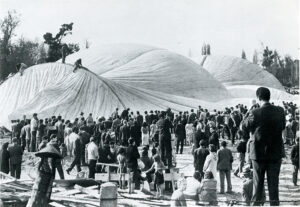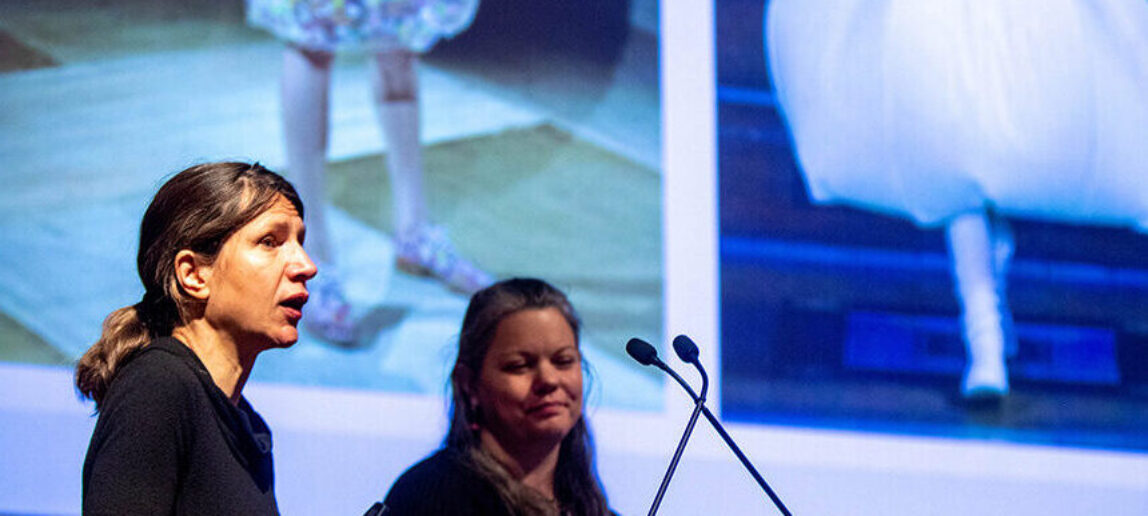Bieber Receives Glasscock Faculty Fellowship For Inflatable Technology Research
Susanneh Bieber, assistant professor in the School of Performance, Visualization and Fine Arts, will receive a Glasscock Faculty Research Fellowship for the 2023-24 academic year.
The $5,000 fellowship will go toward Bieber’s research for a book, tentatively titled “Global Pneumatics.”
“The book focuses on inflatable technology in an interdisciplinary and transnational context. I am interested in how artists, architects and engineers have used inflatable technologies,” she said. “What are the promises and pitfalls of inflatables? And how can we use inflatable technology to address pressing contemporary issues today?”

Bieber’s book “American Artists Engage the Built Environment, 1960-1979” was recently published by Routledge. Her interest in pneumatics goes back to an award-winning article she wrote about the architect Victor Lundy and his work with engineer Walter Bird. Together they designed an inflatable double-domed pavilion to house the Atoms for Peace exhibition that traveled to various cities in Latin America in the early 1960s, and then to other locations around the globe.
“I am fascinated with inflatable structures,” she said. “The pavilion designed by Lundy and Bird was a huge structure, 300 feet long and over 50 feet high. But it could be installed in three days. And it literally just took 30 minutes to inflate the building. This large exhibition space seemed to appear almost miraculously, and it traveled easily. Buildings are often thought of as permanent, stable, immovable. But here you have this incredible pavilion that travels the world.”
This interest has also developed into a class that Bieber will teach alongside Rayna Dexter, instructional associate professor. Performative Pneumatics, which Bieber describes as “thinking about design as research,” begins in the fall.
“The class builds on my new research and is an exciting opportunity to learn together with the students and with my colleague,” Bieber said. “This way we are able to bring together history, theory and practice. We will experiment with different materials, for example, to create inflatable bodysuits or spaces of community. We will learn by doing. How do various materials or plastics react to air? How do we think about the medium of air? Or which new technologies help us advance inflatable designs?”
The book will explore how artists, architects and engineers worked with pneumatics in the United States but also Brazil and Iran during the 1960s, she said. The funds will allow Bieber to study in Brazil and to examine the archives at the Smithsonian in Washington, D.C., and the Getty Research Institute in Los Angeles.
“I was very excited,” she said of getting word about the fellowship. “This makes it real. The funds allow me to travel, research different uses and meanings of pneumatics, and uncover transnational conversations between practitioners who worked in different places in the world.”
Top photo: Susanneh Bieber, left, and Rayna Dexter discussed pneumatics at the School of Performance, Visualization and Fine Arts’ Research & Creative Works Day in February. Bieber and Dexter will teach Performative Pneumatics this fall. Photo by Glen Vigus.

